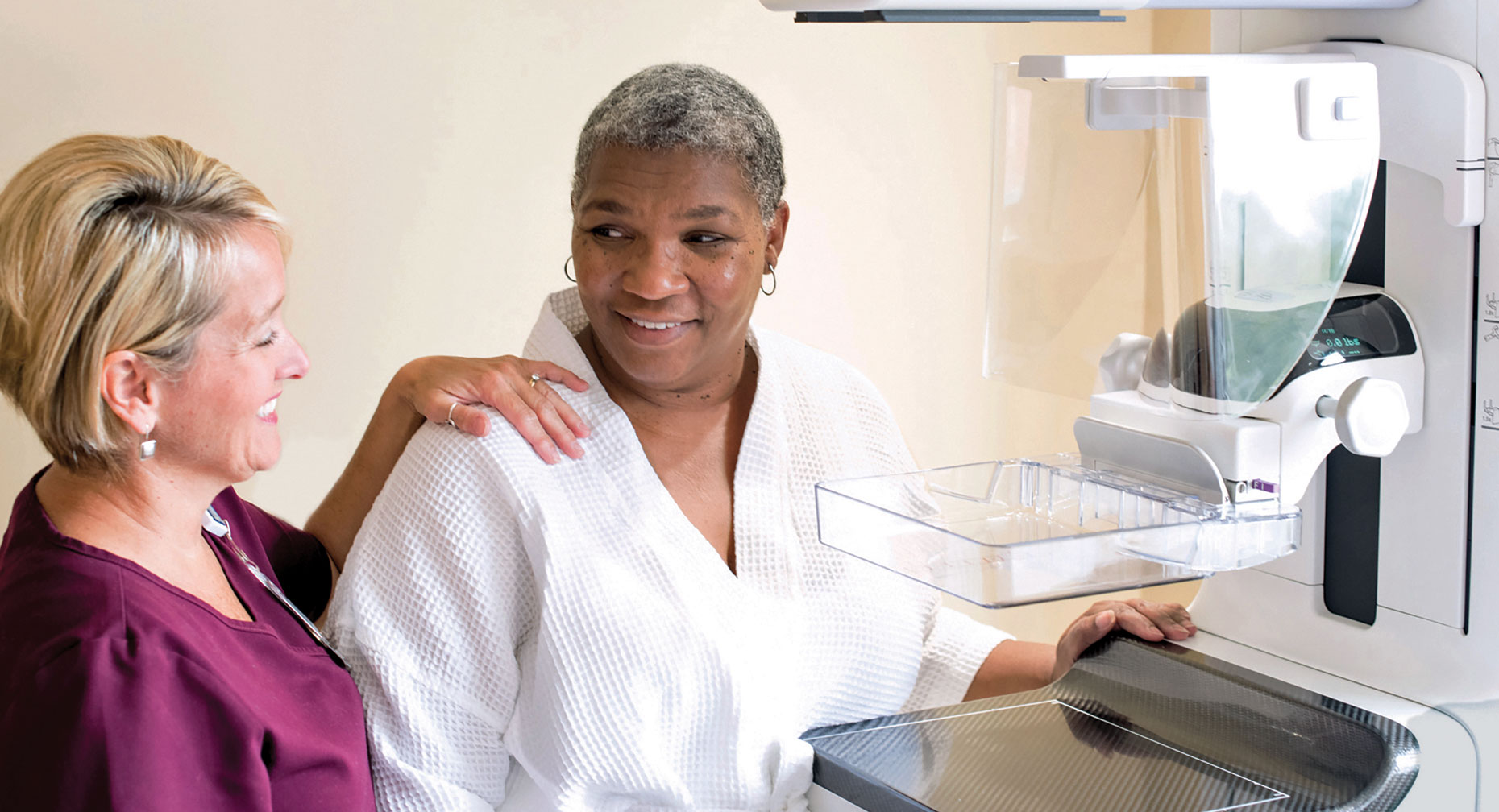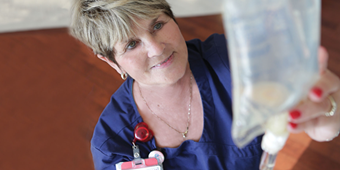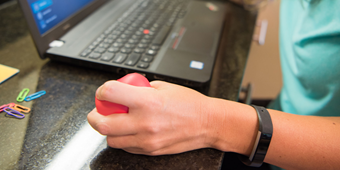For Breast Cancer, Your Best Defense Is Finding It Early

Answer a few questions and we'll provide you with a list of primary care providers that best fit your needs.
It happens to one in eight American women. Getting breast cancer isn’t something we can control. We do have the power, however, to take steps to find breast cancer early through screenings, self-exam, and physical exam.
With the five-year breast cancer survival rate at nearly 100 percent when the cancer is diagnosed in its earliest stages, the stakes are high for identifying it early. Determining who is at high risk for getting breast cancer also helps medical providers zero in on those women most in need of risk-reduction measures.
Your Part in Early Detection
Follow these three important steps to help ensure you don’t have cancer — or to help find it early, when it’s most treatable:
- Get a mammogram. Breast surgical oncologist Selyne Samuel, MD, recommends an annual mammogram beginning at age 40 for women at moderate risk of getting breast cancer. “Women at high risk for breast cancer need a screening mammogram as well as a breast MRI,” she says.
- Have a medical provider check your breasts routinely for abnormal tissue. Dr. Samuel encourages women to get an annual exam to help detect abnormalities that don’t show up on a mammogram. For women at higher risk, she suggests manual exams twice a year.
- Do your own breast self-exams. As an added check, examine yourself routinely for any changes in your breast tissue.
“Not all breast cancers will show up as a lump, which is why it is really important to get your screening mammograms done in a timely fashion,” Dr. Samuel says.
Tests To Confirm Breast Cancer
Technology for breast cancer detection continues to improve. Diagnostic tests that help give an accurate diagnosis include the following:
Mammogram is the first test, taking X-ray images of the breast and revealing unusual or abnormal lumps. A more sophisticated version, 3D mammography, creates multiple images or “slices” of the breast, which is especially helpful if you have dense breast tissue.
Breast MRI (magnetic resonance imaging) is another imaging tool to look at breast tissue without using radiation. It is mostly used for women at high risk for breast cancer and provides additional information about abnormalities and lumps in the breast.
Breast ultrasound uses sound waves to diagnose breast problems, most often in women with abnormal breast tissue. If a mammogram shows a dense area, a targeted ultrasound can be used to study just that area.
Biopsy is an actual tissue sample taken if a questionable area is detected through one of the other tests. Most biopsies can be done in an office setting using local anesthetic and a small needle.
If cancer is found, your doctor will then guide you through breast cancer staging to determine if the cancer is confined to your breast or has spread. Staging provides valuable information for you and your doctor to create the best possible treatment plan.
Factors That Increase Your Breast Cancer Risk
To determine if you are at high risk for breast cancer, you need to consider several factors, including those you can and can’t control.
Breast cancer risk factors you can’t control, says Dr. Samuel, are:
- Being a woman
- Being age 50 or older (breast cancer occurs most frequently from age 50 on)
- A personal history of breast cancer
- A family history of breast or ovarian cancer
- Certain genetic mutations (e.g. inherited changes to BRCA1 and BRCA2 genes)
- A previous abnormal breast biopsy
- Dense breasts
“The factors that can be controlled include weight,” Dr. Samuel continues. “Studies have shown that obesity increases the risk for breast cancer, as does excessive alcohol intake. Exercise and a healthy diet can decrease your risk for breast cancer.”
Having a first pregnancy after age 30, not breastfeeding, and never having a full-term pregnancy can increase breast cancer risk. Taking hormone replacement therapy that includes estrogen and progesterone for more than five years also is a known risk factor.
“Being on hormone replacement therapy for five years or less will help decrease the risk for breast cancer in the future,” Dr. Samuel says.
Answer a few questions and we'll provide you with a list of primary care providers that best fit your needs.
Source: Selyne Samuel, MD, breast surgical oncologist, Premier Surgical Oncology





